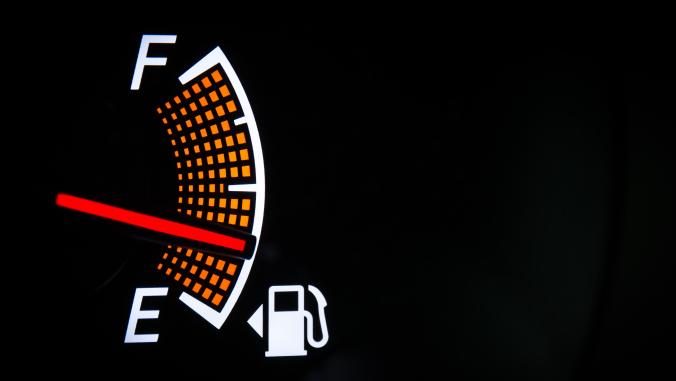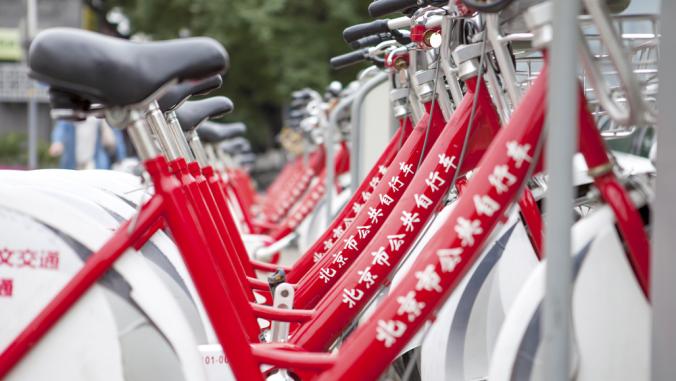Solar's Long and Winding Road
<p>In 1969, the Nixon White House asked a young assistant professor of engineering whether solar energy made sense for America. Absolutely, he replied. Four decades later, Fred Morse is still trying to persuade the government to put its muscle behind solar. Last week, he scored a big victory.</p>

In 1969, the Nixon White House asked a young assistant professor of engineering at the University of Maryland whether solar energy made sense for America. Absolutely, he replied.
Four decades later, Fred Morse is still trying to persuade the government to put its muscle behind solar. Last week, he scored a big victory.
In his weekly radio address on July 3, President Obama announced that the Department of Energy had awarded a $1.45 billion loan guarantee to Abengoa Solar -- a Spanish company where Morse is senior advisor for U.S. operations -- to build one of the largest solar power plants in the world near Gila Bend, Arizona. Obama said:
Once completed, this plant will be the first large-scale solar plant in the U.S. to actually store the energy it generates for later use -- even at night. And it will generate enough clean, renewable energy to power 70,000 homes.
What he didn’t say is that the plant, called Solana, has been in the works since 2007, when Abengoa bought an old alfalfa farm on which to site the plant. If all goes well, it will begin to make electricity in 2013. That’s right–six years, at least, to build a power plant with mostly proven technology.
You’re a patient man, I told Morse when we spoke the other day by phone. “I have to be,” he replied. Forty years waiting for an industry to be born will do that to you.
Morse is a neighbor of mine in Bethesda, Md., and we belong to the same (green) synagogue, Adat Shalom Reconstructionist Congregation, so we’ve chatted occasionally about solar. I’ve been struck by the time that’s required to bring big solar plants that require public subsidies to market, so when the news broke that Abengoa’s plant had cleared a big hurdle, we arranged to talk again.
One reason why the government agencies involved are taking such a long look at the Solana plant is its size, Morse explained. The plant is expected to cost as much as $2 billion, it will create about 1,600 jobs during construction and generate up to 280 megawatts of power (30 of which will be needed to run the plant itself.) Solana will need about 900,000 mirrors, which will be made near Phoenix, and about 97,000 receivers, which will be made by a German firm called Schott Solar in Albuquerque.
“The amount of steel in the structure, to hold the mirrors, is enough to build a second Golden Gate bridge. It’s big. It’s very very big,” Morse said.
The plant uses a technology known as Concentrating Solar Power (CSP) or solar thermal technology, which uses parabolic mirrors to focus the sun’s heat on a fluid which then heats up 700 degrees, heating water to create steam to run turbines.
Here’s an artist’s rendering:

Size tends to be a good thing when building power plants; economies of scale keep costs down. But the regulatory agencies whose approval is needed -- they range from the Arizona Department of Transportation to the White House Office of Management Budget -- tend to take a closer look when people start talking about billions of dollars.
For example, Arizona Public Service, the utility company that has agreed to buy the electricity generated by Solana, had to get approval from the Arizona Corporation Commission to build the plant. Even after federal subsidies are factored in, the power will cost about 19 percent more, according to this 2008 blog. (Natural gas prices have dropped since then, so the differential is probably even greater.) APS has agreed to buy $4 billion worth of electricity from the plant over the next 30 years, in part because to comply with a state law requiring utilities to generate at least 15 percent of their electricity from renewable sources.
You’d think that with a 30-year $4-billion revenue stream that Abengoa, a well-established company with more than $4 billion euros in revenue last year, could obtain financing for the project on the private market … but no. By the fall of 2008, when state regulators okayed the project, the credit markets had frozen. “It was clear that it was going to be very difficult to finance Solana without a federal loan guarantee,” Morse said.
The DOE and OMB analyzed the application for more than a year before giving last week’s conditional okay. Under the provisions of the Energy Act of 2005, the source of the financing, Abengoa had to demonstrate that the plant was innovative, which it is, because it will include new technology enabling energy to be stored for up to six years. But they also had to assure DOE and especially OMB, which tends to be risk-averse, that the storage technology would work because the government is wary of putting its money behind risky schemes. This is the kind of fine line that companies have to negotiate to obtain tax money.
Morse, who worked for DOE for 13 years, understands the dynamic well.
“As a taxpayer, I don’t want to see a big project die in the field and waste a lot of money,” he said. “On the other hand, you want to encourage projects that are innovative and new, and Congress appropriated money to cover some of that risk.”
Another two dozen or so Concentrating Solar Power projects are in various stages of development, most requiring loan guarantees. Morse is rooting for them to succeed, and fast. “We have to build more because you cannot get your supply chain all cranked up, and then have to stop,” he said.
Abengoa wants to build a second large U.S. plant in the Mojave Desert, for which it has a signed power purchase agreement with PG&E Corp. It’s also building plants in Spain, Algeria, Morocco and Abu Dhabi.
This is all encouraging news, but none of it is happening fast enough. We don’t have another 40 years to wait around for this industry to get going.
On a related note, I will be moderating The Energy Collective’s next webinar, “Is There Hope for Solar? Examining the prospects for scaling up solar energy” on July 14th at 1pm ET. Joining me will be Michael Jungreis, business development manager for Siemens Concentrated Solar Power Ltd. and investigative reporting and solar expert Osha Gray Davidson.
GreenBiz.com Senior Writer Marc Gunther maintains a blog a MarcGunther.com.
Top image and index picture CC licensed by Flickr users C-Ali and thisisbossi.





